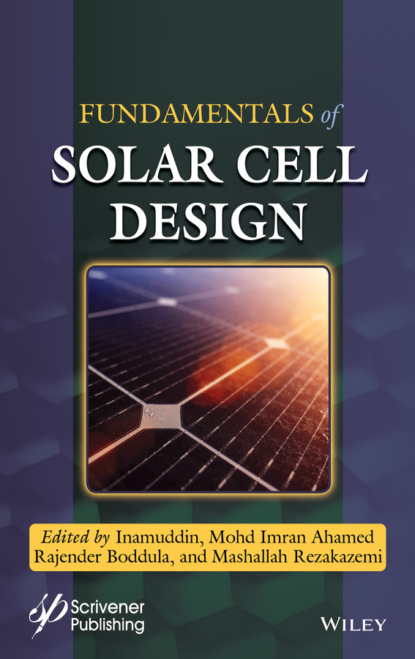- бизнес-книги
- детские книги
- дом, дача
- зарубежная литература
-
знания и навыки
- изучение языков
- компьютерная литература
- научно-популярная литература
- словари, справочники
-
учебная и научная литература
- безопасность жизнедеятельности
- военное дело
- гуманитарные и общественные науки
- естественные науки
- задачники
- монографии
- научные труды
- практикумы
- прочая образовательная литература
- сельское и лесное хозяйство
- технические науки
- учебники и пособия для вузов
- учебники и пособия для ссузов
- учебно-методические пособия
- история
- комиксы и манга
- легкое чтение
- психология, мотивация
- публицистика и периодические издания
- родителям
- серьезное чтение
- спорт, здоровье, красота
- хобби, досуг
Группа авторов — Fundamentals of Solar Cell Design
Купить и скачать за 24099.60 ₽

Понравилась книга? Поделись в соцсетях:
Автор: Группа авторов
Издатель: John Wiley & Sons Limited
ISBN: 9781119725046
Описание: Solar cells are semiconductor devices that convert light photons into electricity in photovoltaic energy conversion and can help to overcome the global energy crisis. Solar cells have many applications including remote area power systems, earth-orbiting satellites, wristwatches, water pumping, photodetectors and remote radiotelephones. Solar cell technology is economically feasible for commercial-scale power generation. While commercial solar cells exhibit good performance and stability, still researchers are looking at many ways to improve the performance and cost of solar cells via modulating the fundamental properties of semiconductors. Solar cell technology is the key to a clean energy future. Solar cells directly harvest energy from the sun’s light radiation into electricity are in an ever-growing demand for future global energy production. Solar cell-based energy harvesting has attracted worldwide attention for their notable features, such as cheap renewable technology, scalable, lightweight, flexibility, versatility, no greenhouse gas emission, environment, and economy friendly and operational costs are quite low compared to other forms of power generation. Thus, solar cell technology is at the forefront of renewable energy technologies which are used in telecommunications, power plants, small devices to satellites. Aiming at large-scale implementation can be manipulated by various types used in solar cell design and exploration of new materials towards improving performance and reducing cost. Therefore, in-depth knowledge about solar cell design is fundamental for those who wish to apply this knowledge and understanding in industries and academics. This book provides a comprehensive overview on solar cells and explores the history to evolution and present scenarios of solar cell design, classification, properties, various semiconductor materials, thin films, wafer-scale, transparent solar cells, and so on. It also includes solar cells’ characterization analytical tools, theoretical modeling, practices to enhance conversion efficiencies, applications and patents.